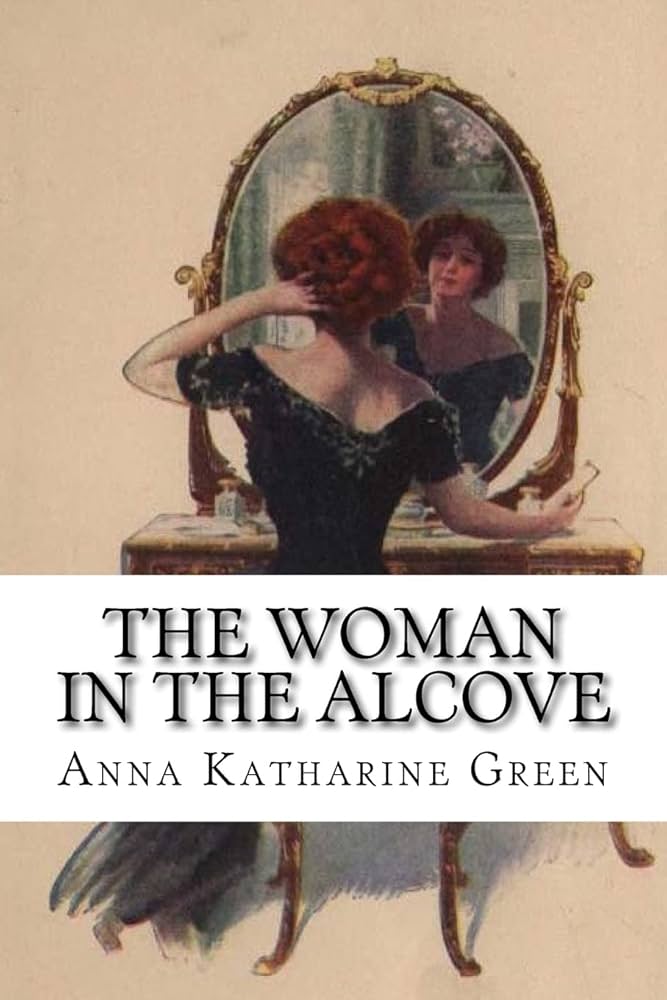Chapter XIII — The woman in the Alcove
byChapter XIII — The woman in the Alcove opens with the narrator pacing through a long, sleepless night, haunted not by her nursing duties, but by the ever-complicating puzzle surrounding Mr. Durand. Although the patient in her care shows signs of recovery, her thoughts drift constantly to the man whose fate hangs on unraveling a hidden truth. She wrestles with the fear that the plan to clear his name may have collapsed before it could bear fruit. The silence of the hours deepens her anxiety, amplifying every uncertainty. By morning, fatigue and worry intertwine, but duty pulls her back into motion. A conversation with Miss Grey unexpectedly shifts the tone, as the young woman confides a tender, private revelation that softens the narrator’s perspective on the family she has long viewed with suspicion.
Her next encounter, this time with Mr. Grey, is more subdued and polite, but something in his demeanor suggests tension beneath the surface. He vaguely references news coverage of the Fairbrother murder but withholds details. This sends the narrator straight to the source—Inspector Dalzell at police headquarters. What follows is a new layer to the mystery. The inspector presents a twist: a missing reference linked to a man named Wellgood, a waiter whose sudden disappearance after Mrs. Fairbrother’s death now demands closer attention. This Wellgood was hired under a recommendation from Hiram Sears, a long-serving steward to Mr. Fairbrother and a man who has now vanished himself. The connections seem thin but carry weight. When mystery hides in routine paperwork, the smallest link can be the key.
Sears’ deep loyalty to Mrs. Fairbrother now takes on a more troubling hue. Previously seen as a dutiful servant, he now emerges as a man who may have held stronger, possibly obsessive feelings for his employer. His behavior in the days before her death, though subtle, is now revisited with new suspicion. Inspector Dalzell describes him as reliable but oddly devoted, especially after the death of Mr. Fairbrother. And it was through him that Wellgood entered the scene. Did Sears vouch for Wellgood out of trust, or was he shielding someone from scrutiny? His absence casts doubt. His silence becomes the loudest accusation. The narrator listens carefully, aware that every sentence could turn suspicion toward or away from the man she still hopes is innocent.
Even as evidence grows around Sears and the shadowy Wellgood, the narrator cannot escape her emotional entanglement. Her belief in Mr. Durand’s innocence remains strong, but the uncertainty surrounding others in the household presses heavily. Each revelation forces her to reconsider earlier judgments. The case she once approached with clinical detachment now involves people she’s come to know personally. Her concern for Miss Grey and the tender honesty the young woman shared earlier in the day complicates her view of Mr. Grey as well. In her quest for justice, she now sees the cost of each theory, the weight of each name placed under suspicion. This isn’t just about crime—it’s about human fragility, loyalty, and love misplaced or misunderstood.
The chapter ends not with clarity, but with questions layered deeper than before. What secrets did Hiram Sears carry that drove him into hiding? What role did Wellgood truly play, and how was he connected to both the victim and those around her? And can the narrator continue to navigate this web without compromising her sense of fairness or her emotional composure? As each character grows more vivid in motive and memory, the murder itself seems less like a single act and more like the tragic eruption of long-suppressed desires, fears, and allegiances. The narrator, now fully immersed, must balance logic with compassion if she hopes to uncover what truly happened in the alcove.


